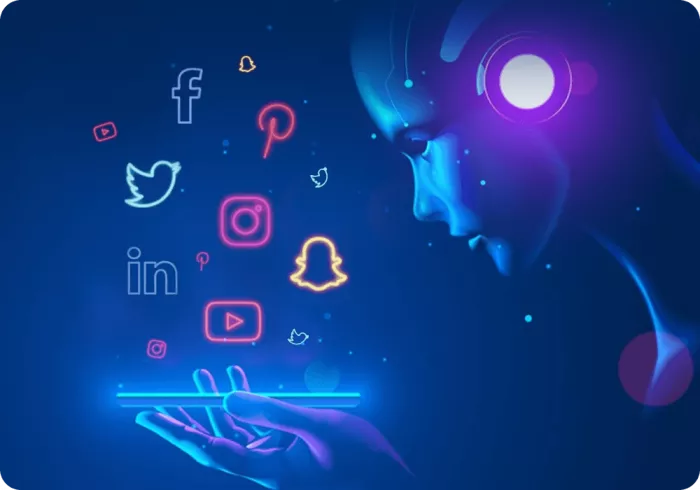
Artificial intelligence (AI) has firmly cemented itself as a core player in the marketing landscape. From predictive analytics and chatbots to personalised content recommendations and automated ad targeting, AI is transforming how businesses connect with their audiences. And yet, for all its innovation, AI in marketing is still widely misunderstood. A range of myths – some outdated, some completely unfounded – continue to shape how marketers and business owners perceive this evolving technology.
In this post, we’ll take a closer look at some of the most common myths surrounding AI in marketing and set the record straight. If you’re keen to understand both the promise and the pitfalls, AI in marketing is best explored with a balanced perspective.

Myth 1 – AI Will Replace Marketers
Perhaps the most pervasive myth is the fear that AI will make human marketers obsolete. It’s true that AI can handle tasks that were once time-consuming (like analysing data, segmenting audiences, or automating email sequences) but it doesn’t have the creative, strategic, and emotional intelligence that humans bring to the table. Marketing is as much about storytelling, brand identity, and relationship-building as it is about analytics. AI can enhance these efforts by providing data-driven insights, but it cannot replace the nuanced thinking and human empathy required to build lasting brand loyalty.
Reality: Rather than replacing marketers, AI is becoming an indispensable tool that helps them work smarter, not harder.
Myth 2 – AI Marketing is Only for Big Brands
Many small and medium-sized businesses assume that AI-driven marketing is the domain of Fortune 500 companies with deep pockets and dedicated tech teams. While that may have been true five or 10 years ago, today’s AI tools are far more accessible and scalable. Platforms offering AI-powered solutions are now available to businesses of all shapes and sizes. Whether you’re running a boutique eCommerce store or a mid-tier marketing agency, AI can help you streamline campaign management, generate content ideas, or automate social media engagement.
Reality: Affordable, user-friendly AI tools are democratising access to intelligent marketing solutions for businesses of every size.
Myth 3 – AI Doesn’t Understand Branding
AI’s reliance on data and logic often leads people to believe it can’t “get” a brand’s voice or personality. While it’s true that AI lacks emotion, it can be trained on brand guidelines, customer behaviour, tone of voice, and content examples to produce marketing materials that are remarkably on-brand. Tools leveraging natural language processing (NLP) are becoming increasingly adept at understanding and replicating tone, style, and intent. With proper inputs and human supervision, AI-generated content can be aligned seamlessly with a brand's identity.
Reality: AI doesn’t innately understand branding; but with the right prompts and guidance, it can uphold and even strengthen brand consistency across channels.
Myth 4 – AI is Always Objective and Unbiased
One of the more dangerous myths about AI is that it’s inherently objective. In truth, AI systems are only as unbiased as the data they are trained on. If that data contains biases – conscious or otherwise – those biases can (and often do) show up in AI-generated outputs.
Marketers using AI must be vigilant about auditing training data, monitoring AI decisions, and applying human oversight. Ethics in AI marketing is a rapidly growing field, and rightly so.
Reality: AI can perpetuate bias if left unchecked. Ethical data practices and human accountability are crucial to using AI responsibly.
Myth 5 – AI Kills Creativity
Creativity and automation might seem like strange bedfellows, but they can actually complement each other beautifully. AI can generate ideas, identify emerging trends, and perform A/B testing at scale, freeing up human marketers to focus on high-level creative thinking. For example, AI can suggest content topics based on trending keywords, help script video ads by analysing what’s working across platforms, or even design basic visuals. But the final creative decisions still rest with the humans who understand brand context, audience emotion, and campaign nuance.
Reality: AI can amplify creativity by taking care of the grunt work and leaving humans to do what we do best – innovate and inspire.
Myth 6 – AI-Driven Marketing Lacks a Human Touch
This myth stems from the idea that AI interactions are cold and robotic. While that was often the case in the early days of chatbots and automation, today’s AI systems are far more sophisticated. AI-powered chatbots, for example, can use conversational tone, emotional sentiment analysis, and real-time data to respond more naturally to customer inquiries. AI can also personalise experiences by learning from a user’s behaviour and preferences – offering recommendations or content that feels genuinely relevant.
Reality: When used correctly, AI can enhance the human touch by delivering more personalised, timely, and context-aware experiences.
Myth 7 – AI in Marketing is Just a Trend
Sceptics often dismiss AI as just another passing fad, much like QR codes or Google Glass. But the scale and speed at which AI is evolving tells a different story. From machine learning models that predict consumer behaviour to generative AI tools that craft compelling ad copy, AI is deeply embedded in the future of marketing. Even regulatory bodies and marketing associations are now developing ethical guidelines to ensure AI is used responsibly – another sign that it’s here to stay.
Reality: AI isn’t a trend – it’s a transformational force that’s reshaping how marketers operate in every sector.
Myth 8 – It’s “Set and Forget”
The idea that you can deploy an AI tool and let it run unattended is another common misconception. AI is powerful, but it’s not perfect – and it certainly isn’t autonomous. Marketing strategies still need thoughtful oversight, ongoing optimisation, and regular performance reviews. AI tools work best when they’re part of a well-managed marketing ecosystem, continuously tested, refined, and aligned with broader business goals.
Reality: AI requires thoughtful implementation and ongoing human management to deliver optimal results.
The Path Forward – Informed, Ethical, Strategic
The real power of AI lies not in replacing marketers, but in supporting them. When implemented thoughtfully and ethically, AI tools can automate routine tasks, generate valuable insights, and help marketers focus on what matters most – creating meaningful connections with their audience. As with any tool, the key to success lies in understanding both its capabilities and its limitations. By dispelling the myths, businesses can make more informed decisions about how to integrate AI into their marketing strategies.
So, next time you hear someone say “AI is taking over,” you’ll know better. It’s not about replacement… it’s about enhancement.





Comments